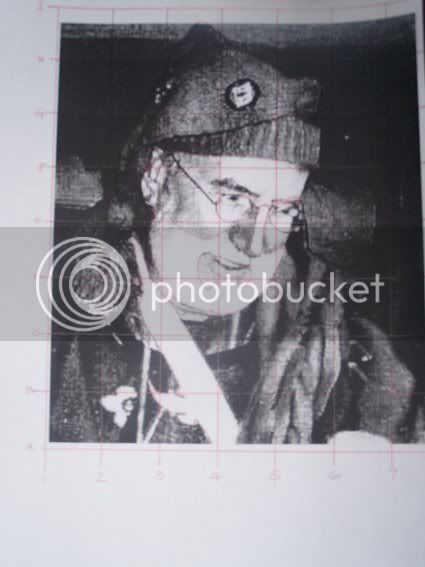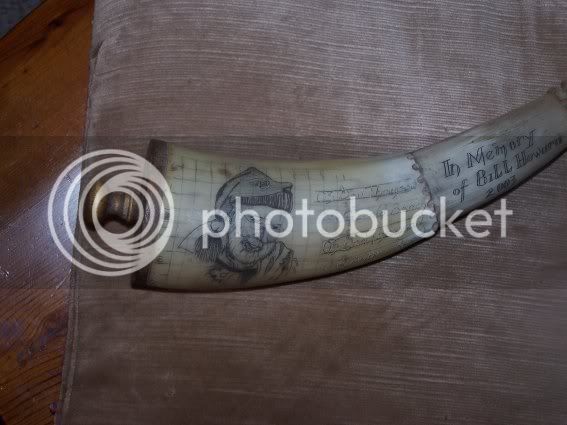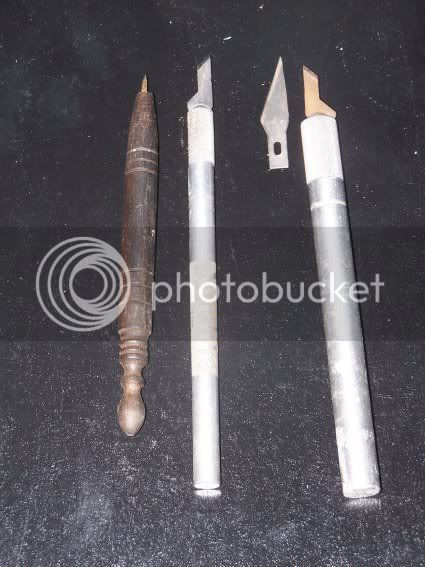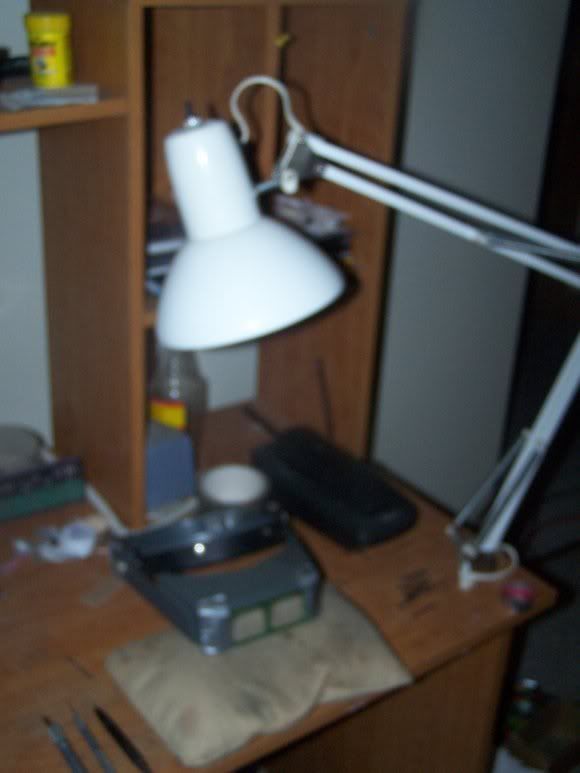I've had some good interest ,and I have a first lesson,would like to post a lesson at lest one a week,and then take questions and listen to what other peoples points of view,Questions can be on anything you want,linework,shading....etc.Here goes.
Gittin Picture to horn
This is a method that works for uneven surfaces, round ,whatever,once you find a picture you want to copy,I use this for maphorns and potraits,when I want to be precise,and the bonus for maps ,they are to scale,and getting features precise (Nicloe kidman doesn’t come out lookin like prince charles)
you got yer picture,now you’ll put a grid on it ,pick a spot just below the bottom of the pic and to one side,perpendicular to the first line.then just make a series of lines across and up.
Ok size of squares for the picture keep em even1 in 2 in.
Lets use one inch squares,now number the bottom ones and letter the sides,a,b,c,....this’ll help when you do the transfer.
Yer done that part,now for the horn.....for this you’ll need a flexible strait edge,could be a piece of plastic ,cardboard,I use a flexible plastic ruler,you can pick up atta drafting store,they have a ruler along the edge
Once you have it figured where you want the piece on the horn,put a line across the bottom and to the side,gits a bit tricky here,count the lines you have going up on your master lets say you have 6,that will equal 6 inches in my example and the area you have on the horn is only 3 inches.So 3divided by 6=0.5 half in.So now yor lines on the horn are going to be 1\2 inch wide.same for the lines going across.thats yor grid.
Now you start drawing,I use an hb pencil or a 2h pencil,sorry back to the drafting store ,or art store,2h is harder sofiner lines ,just not as dark,you can also git 4h harder again,keeps a better point.I just keep my hb sharp,gives me a break ,so my eyes don’t go squirrly lookin at thos friggin lines..
Now looking at yor master ,pick a start point ,say A1,wherever a line in yer picture crosses the grid ,look at the relationship of the line you want to copy in relation to the gridline and follow it to where it crosses the next line,thats all there is to it.I ”˜m sorry my printer here sucks so don’t have examples yet,will print them off at work tomorrow and post them .
Well this is first try ,not sure how they’ll post ,we’ll see.Any questions on this lesson or about whatever,will probably lead to another lesson.


Gittin Picture to horn
This is a method that works for uneven surfaces, round ,whatever,once you find a picture you want to copy,I use this for maphorns and potraits,when I want to be precise,and the bonus for maps ,they are to scale,and getting features precise (Nicloe kidman doesn’t come out lookin like prince charles)
you got yer picture,now you’ll put a grid on it ,pick a spot just below the bottom of the pic and to one side,perpendicular to the first line.then just make a series of lines across and up.
Ok size of squares for the picture keep em even1 in 2 in.
Lets use one inch squares,now number the bottom ones and letter the sides,a,b,c,....this’ll help when you do the transfer.
Yer done that part,now for the horn.....for this you’ll need a flexible strait edge,could be a piece of plastic ,cardboard,I use a flexible plastic ruler,you can pick up atta drafting store,they have a ruler along the edge
Once you have it figured where you want the piece on the horn,put a line across the bottom and to the side,gits a bit tricky here,count the lines you have going up on your master lets say you have 6,that will equal 6 inches in my example and the area you have on the horn is only 3 inches.So 3divided by 6=0.5 half in.So now yor lines on the horn are going to be 1\2 inch wide.same for the lines going across.thats yor grid.
Now you start drawing,I use an hb pencil or a 2h pencil,sorry back to the drafting store ,or art store,2h is harder sofiner lines ,just not as dark,you can also git 4h harder again,keeps a better point.I just keep my hb sharp,gives me a break ,so my eyes don’t go squirrly lookin at thos friggin lines..
Now looking at yor master ,pick a start point ,say A1,wherever a line in yer picture crosses the grid ,look at the relationship of the line you want to copy in relation to the gridline and follow it to where it crosses the next line,thats all there is to it.I ”˜m sorry my printer here sucks so don’t have examples yet,will print them off at work tomorrow and post them .
Well this is first try ,not sure how they’ll post ,we’ll see.Any questions on this lesson or about whatever,will probably lead to another lesson.









